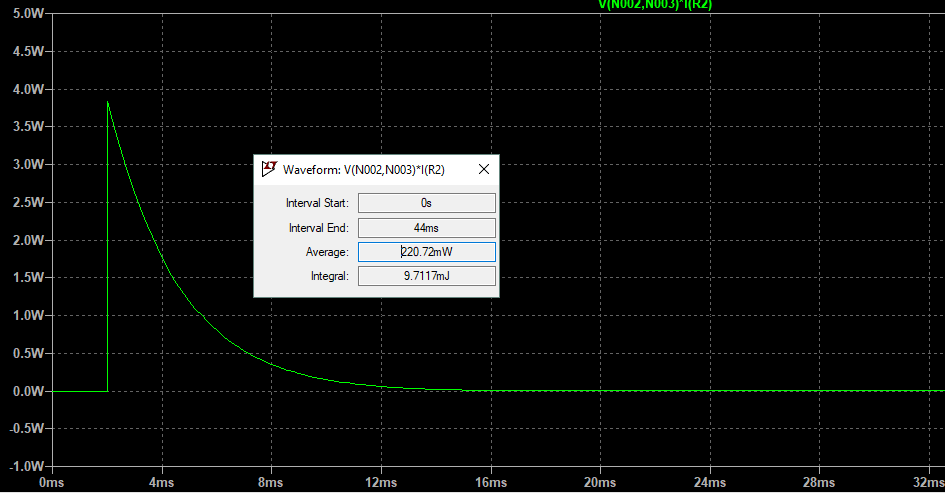In a circuit I designed, there is a moment when a capacitor should be discharged through a resistor.
The power dissipated in the resistor has the format of the screenshot in the LTspice.
Should I select the average as a power rating and thus choosing a 1/4 watt resistor or should I select a bigger value?
As it can be observed, the power will reach 4 watts at the starting of the discharge phase.

